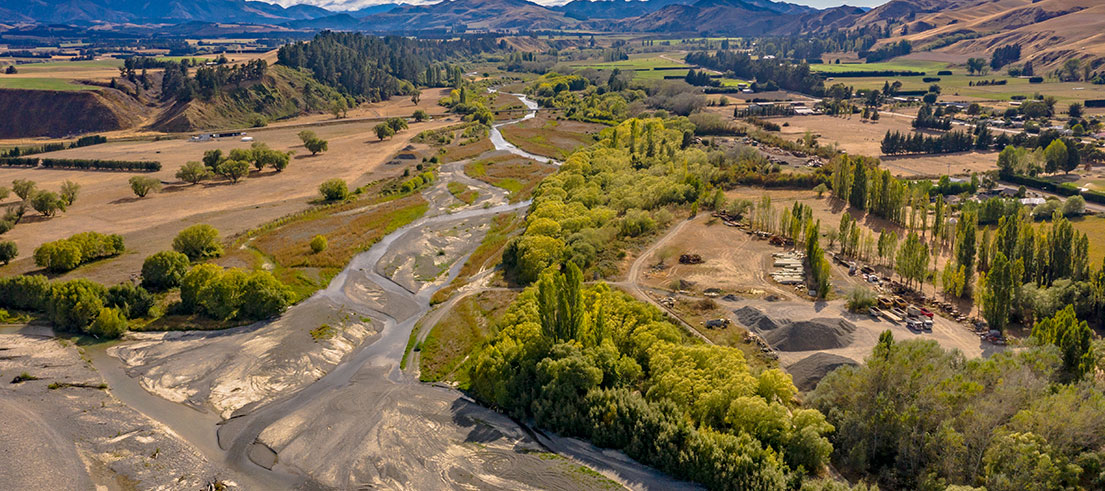
Waiau township stopbank works boost flood resilience
Stopbank works have recently been completed along the Mason and Waiau Uwha rivers, improving the level of flood protection to the Waiau township as part of our Climate Resilience Programme.
Partly funded by COVID-19 relief funding from the Ministry of Business Innovation and Employment through their Regional Economic Development & Investment Unit (Kānoa), works like this are critical as climate change-induced flooding is expected to become more frequent and severe.
The third largest catchment in Canterbury
The Waiau Uwha River catchment extends back to the Main Divide and is the third-largest catchment of any Canterbury river at over 3300 km2.
The township has flooded many times over the years with a major weather event recorded in May 1923 that caused damage to public and private property, including significant damage to the Waiau Bridge.
A history of ad hoc flood protection
Today there are about 300 residents living in Waiau with about 100 houses and a mix of commercial buildings in the vicinity.
The town’s stopbanks were constructed ad-hoc over the last century, with the earliest being built in 1907 and 1922. These stopbanks were damaged by the 2016 earthquake.
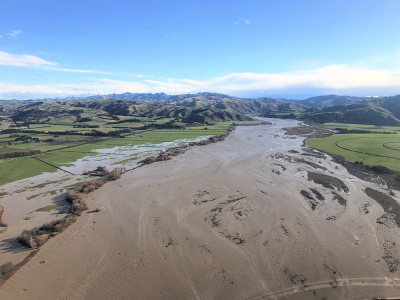
The Waiau Uwha River at Spotswood looking upstream after heavy rainfall - 17 July 2021.
Flood mitigation supports roads and other infrastructure
The latest flood protection works help protect the Waiau township and the Inland Road (State Highway 70) from flooding. Given the importance of SH70 as an alternative to SH1, a coastal route which can be affected by slips, this flood protection supports a more robust transport network for getting to and from Kaikōura.
Hurunui District Mayor Marie Black noted that there has been significant interest over the years in mitigating flood risk at this location.
“At the end of the day what we value most is the well-being of our families, the safety of our homes and the prosperity of the community we live in and this project, with investment from Central Government, has contributed enormously to peace of mind for Waiau residents.
“It’s a great outcome for the local community,” she said.
Environment Canterbury Chair Jenny Hughey said that this is the kind of future-focussed flood protection work for which councils are jointly calling for funding in the newly released Te Uru Kahika report.
“With Kānoa funding for our Climate Resilience Programme of Flood Protection Projects we are working alongside other councils in New Zealand on local projects, like the stopbank strengthening and remediation in Waiau, that invest in early flood risk reduction and preparedness.
“This one-off funding is a welcome boost, but looking ahead we need sustainable, long-term solutions.
“There are many other communities who could benefit from similar Central Government co-investment. We can’t rely solely on Canterbury ratepayers to fund all the work required,” Hughey said.
Remediation and strengthening of stopbanks
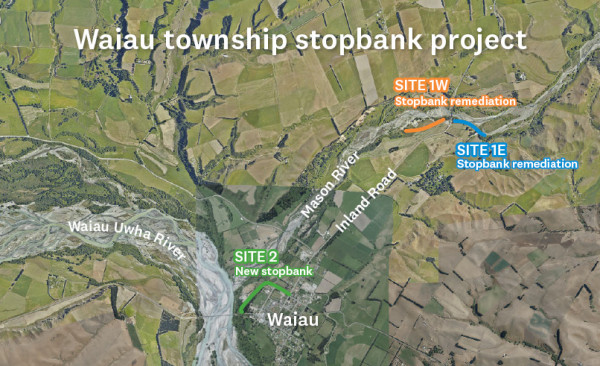
Works commenced with reconstruction of the existing stopbanks on either side of the Inland Road Bridge (sites 1E and 1W) followed by construction of a 700 m long stopbank from Clarence Street to the Rotherham Road Bridge (site 2)
Area engineer Fred Brooks said that the Waiau project involved the remediation and strengthening of two existing stopbanks alongside the Inland Road (sites 1W and 1E on the map), and the construction of a new stopbank bordering the eastern side of the town (site 2). Works were completed by local contractors, which helped to support the local economy.
About 20,000 m3 of gravel was sourced from the river to construct the new stopbank which is 733.5 metres long. The gravel was compacted and then topsoiled, with spring rains encouraging rapid growth of the grass seed that was laid over the stopbanks.
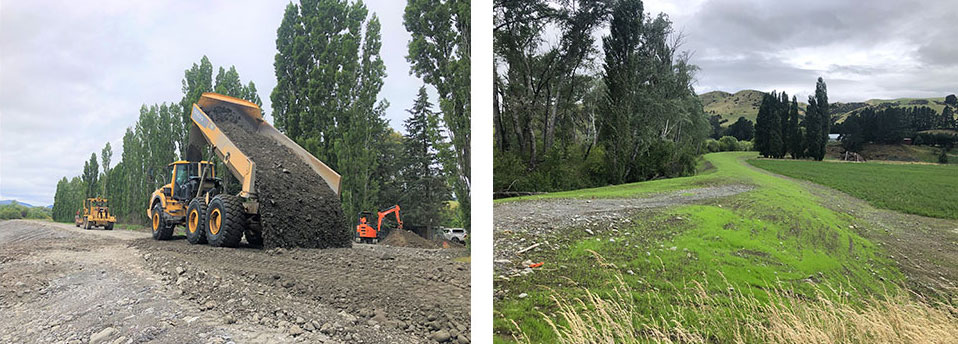
Left: Top-soiling the newly compacted stopbank. Right: Grass sprouting on the new stopbank after spring rains.
Works also included removing a significant amount of vegetation from the existing stopbanks at Inlands Road which can be seen in the images below. The roots of trees and shrubs create a weakness in the stopbank by creating paths for water to flow through in a flood, and shrubs and trees can prevent easy visual inspections, which staff need to carry out quickly to assess flood repairs.
Future planned works include environmental enhancement such as weed control (Old Man’s Beard control in the tree block upstream of Dog Brook), targeted planting and upgrades to the Waiau Uwha River walking track.
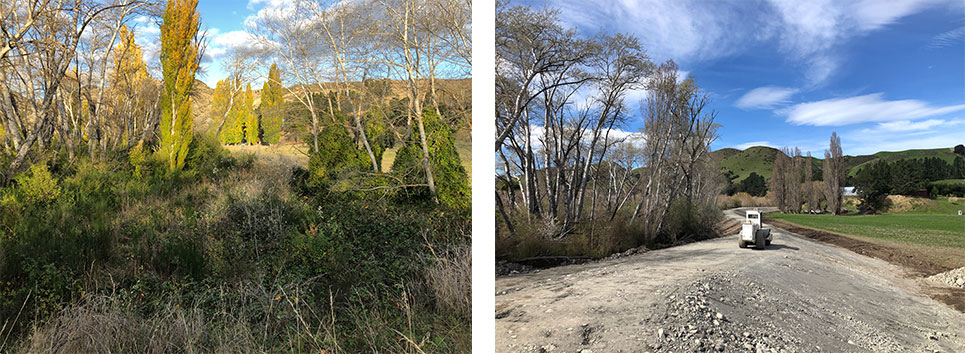
Waiau Uwha River stopbank before (left) and after (right) vegetation clearance.
